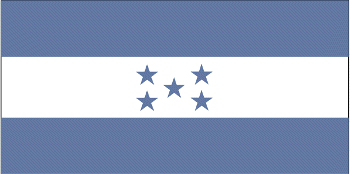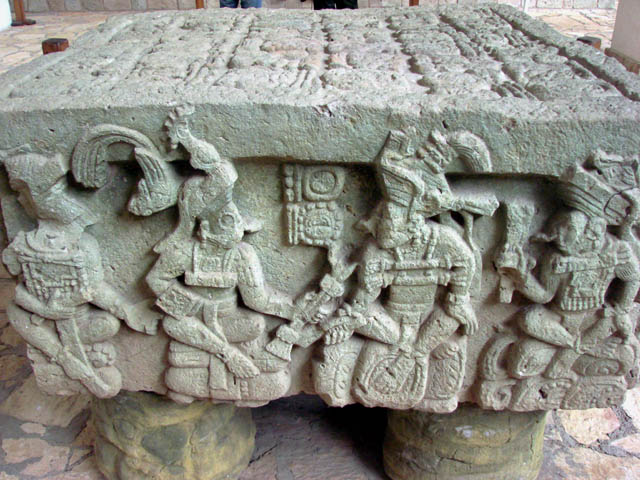
I got a bus ticket from a tour agency to travel from Flores to Copan. I had told them I didn't want a tour of Copan. The ticket was only $35 US for a 7 hour trip. I didn't inquire about the bus, but I had just paid for a ticket on the large public bus. At least I had a seat - most of the trip it was very crowded with people standing in the aisle. On the bus ride that afternoon there were two separate truck accidents that closed the entire road for long periods of time, so it took me 9 hours instead of the expected 7 hours. I read my guidebook and found that I was bound for Quichimula, the large regional center of Guatemala instead of all the way to the Honduran border. To get to the border, I had to transfer to a smaller local bus and it would take me another one and one-half hours. When I got to Quichimula there was a small bus ready to leave in a few minutes, so I didn't get a chance to eat. By that time it was 5:30 pm and I had been on the road for the entire day. The small bus reached the Honduras border around 8 pm and I went through customs. This border crossing was very small and staffed by a single person. After finishing my paperwork, I ran to catch the last Honduran bus from the border into town. It left a minute after I got on board. Missing this last bus would have meant a 10 km walk to the city in the rain, wind and darkness.
I found a single hotel room in the city located next to the central plaza. It was $25 US with a private bathroom.
The small city of Copan Ruinas is located right next to the ancient Mayan ruins of Copan. It is within easy walking distance from the center of town (1 km distance). The next morning I walked to the park entrance but it was too early, so I walked back to town. I came back for the 9 am park opening. I paid the entrance fee, and walked the short distance into the ruins. At the main gate, there were a flock of more than a dozen scarlet macaws (the national bird of Honduras) just sitting on the top of the fence watching the people arrive. These wild birds were unchained and free to fly anywhere, but seemed to enjoy watching people coming to the park. When they did decide to fly around as a group, it appeared to be a huge colorful kite moving through the jungle air, except for their loud parrot squawking.
Wild Scarlet Macaws view National Park visitors at the entry gate
The Copan ruins are much smaller in size than the ones at Tikal, but they are noted for their ornately carved "stellae", or rock monuments made of limestone. The central plaza of Copan was filled with many of these carved limestone stellae. Due to the smaller size of this site, I was able to see all the buildings and ruins in about 4 hours. Afterwards, I bought a ticket to the Copan Museum inside the national park, which was a good choice because the museum was where all the best artifacts were stored for security and weathering reasons.
This scale model of the Copan ruins show how small they are compared to the 20 square miles of Tikal
Top of a temple stairway
Hieroglyphic Stairway at Copan - each step is engraved with Mayan text
One of the many intricately carved limestone stellae in the central plaza - about 8 feet tall
One
of the most significant limestone carvings of Copan has been moved from
its original temple location to the museum for preservation and is
called Altar Q. This four-sided limestone carving depicts each of the
16 kings who ruled Copan. Each of the 4 sides has 4 kings carved on it.

The first King of Copan is K'inich Yax K'uk' Mo, second from left
His successor, the second king, is on the far left - the last king of Copan (#16) is to his right
The first King of Copan is K'inich Yax K'uk' Mo, second from left
His successor, the second king, is on the far left - the last king of Copan (#16) is to his right
Continue the trip description in the Antigua, Guatemala link